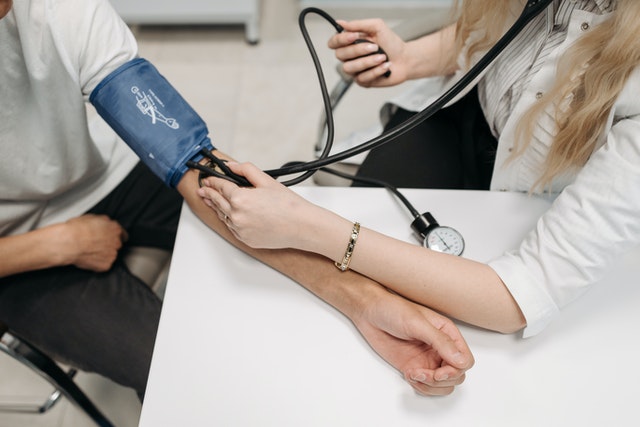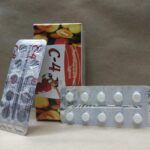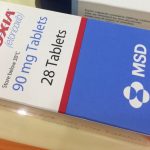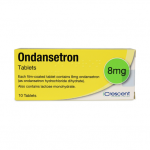Lisipril Pills: Uses, How it works, Dosage, Side Effects, Interaction

What is Lisipril used for?
Lisipril oral is a brand of Lisinopril, a prescription medication used to treat high blood pressure and heart failure. It’s also used to improve your chance of survival after a heart attack. This drug may be used as part of a combination therapy. That means you may need to take it with other drugs.
Lisinopril the active ingredient in Lisipril was patented in 1978 and approved for medical use in the United States in 1987. It is available as a generic medication. In 2019, it was the third most commonly prescribed medication in the United States, with more than 91 million prescriptions.
How Lisipril works
Lisipril belongs to a class of drugs called angiotensin-converting enzyme (ACE) inhibitors. A class of drugs is a group of medications that work in a similar way. They have a similar chemical structure and are often used to treat similar conditions. This drug relaxes the blood vessels in your body. This reduces stress on your heart and lowers your blood pressure.
How should Lisipril be used?
Lisipril comes as a tablet and a solution (liquid) to take by mouth. It is usually taken once a day. To help you remember to take Lisipril, take it around the same time every day. Follow the directions on your prescription label carefully, and ask your doctor or pharmacist to explain any part you do not understand. Take Lisipril exactly as directed.
Lisipril oral tablets are available in the following strengths:
- 2.5 milligrams (mg)
- 5 mg
- 10 mg
- 20 mg
- 30 mg
- 40 mg
Dosage for high blood pressure: For treating hypertension (high blood pressure) in adults, the recommended starting dose is 10 mg taken once per day. Depending on your blood pressure readings, your doctor may adjust your dose over time. The typical dosing range is 20 mg to 40 mg taken once daily.
Dosage for adjuvant treatment of heart failure: When Lisipril is used as an adjuvant (add-on) treatment for heart failure, the recommended starting dose is 5 mg taken once per day. But if you have low blood sodium levels, your doctor may have you start with a dose of 2.5 mg taken once a day.
Over time, your doctor will increase your dose. They’ll try to get you to the maximum dose of 40 mg if you don’t have bothersome side effects and if Lisipril seems to be working for you.
Dosage for heart attack: For reducing the risk of death after a heart attack, the recommended starting dosage of Lisipril is 5 mg. You’ll get another 5-mg dose 24 hours later. After another 24 hours, you’ll get one 10-mg dose. You’ll then continue taking 10 mg once per day for at least 6 weeks. Your doctor may prescribe a lower dose of Lisipril if you have hypotension (low blood pressure) after your heart attack.
Children’s dosage: For high blood pressure in children, it’s recommended that treatment starts with a dosage of no more than 5 mg per day. The dose will then be adjusted based on the child’s blood pressure readings, up to a maximum dose of 40 mg per day. To determine the right Lisipril dose, your child’s doctor will use the child’s weight in kilograms.
Do not take more or less of it or take it more often than prescribed by your doctor. If you are taking the solution, do not use a household spoon to measure your dose. Use an oral syringe made especially for measuring liquid medication.
Your doctor will probably start you on a low dose of Lisipril and gradually increase your dose.
Lisipril controls your condition, but it is not a cure. Continue to take Lisipril even if you feel well. Do not stop taking Lisipril without talking to your doctor.
Lisipril side effects
Lisipril oral tablet does not cause drowsiness. However, it may cause low blood pressure. This can make you feel faint or dizzy. You shouldn’t drive, use machinery, or do other activities that require alertness until you know how this drug affects you. Lisipril can also have other side effects.
More common side effects
The most common side effects that can occur with Lisipril include:
• chest pain
• dizziness
• headache
• low blood pressure
• persistent cough
If these effects are mild, they may go away within a few days or a couple of weeks. If they’re more severe or don’t go away, talk with your doctor or pharmacist.
Serious side effects
Call your doctor right away if you have serious side effects. Call 911 if your symptoms feel life-threatening or if you think you’re having a medical emergency. Serious side effects and their symptoms can include the following:
• hypersensitivity (allergic) reaction. Symptoms include:
o swelling of your face, lips, tongue, or throat
o trouble breathing
o trouble swallowing
o stomach (abdomen) pain with or without nausea or vomiting
• kidney problems. Symptoms include:
o tiredness
o swelling, especially of your hands, feet, or ankles
o shortness of breath
o weight gain
• liver failure. Symptoms include:
o yellowing of your skin and the whites of your eyes
o elevated liver enzymes
o stomach pain
o nausea and vomiting
• high potassium levels. This drug can cause dangerously high potassium. This can lead to arrhythmia (heart rate or rhythm problems). Your risk may be higher if you have kidney disease or diabetes, or if you’re taking other drugs that increase potassium levels.
What other drugs will affect Lisipril?
Tell your doctor about all your current medicines and any you start or stop using, especially:
• a diuretic or “water pill”;
• lithium;
• gold injections to treat arthritis;
• insulin or oral diabetes medicine;
• a potassium supplement;
• medicine to prevent organ transplant rejection – everolimus, sirolimus, tacrolimus, temsirolimus; or
• NSAIDs (nonsteroidal anti-inflammatory drugs) – aspirin, ibuprofen (Advil, Motrin), naproxen (Aleve), celecoxib, diclofenac, indomethacin, meloxicam, and others.
This list is not complete. Other drugs may interact with Lisipril, including prescription and over-the-counter medicines, vitamins, and herbal products. Not all possible interactions are listed in this medication guide.





